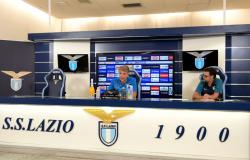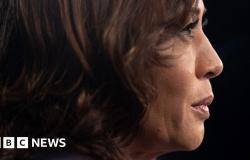“Suddenly a spotlight came on, illuminating the belfry, and we saw the tricolour flag rise.”
He lived near Rue de La Loire, too young to understand that the huge column of German soldiers that was moving up Rue de Montmoreau on August 30th was only the beginning of the events of the following day: August 31st. 7:30 am, first skirmishes on the Ma Campagne plateau. 12:00 pm, the resistance fighters of the RAC brigade occupy Les Chaumes de Crage, the Germans are still in the Bois Saint-Martin. In the afternoon, the investment of the suburbs begins to the south-east, before advancing into the city. There are numerous exchanges of fire at the end of the afternoon, particularly at La Bussatte, at the entrance to the RN10, and in the Saint-Martin district. 8:30 pm, the Germans evacuate the telephone exchange. 8:45 pm, the FFI command (French Forces of the Interior, Gaullists) accepts the truce negotiated by the prefect. 10 p.m., the SSS, special sabotage section, arrives at the town hall. The RAC and the GAS, the autonomous sabotage group, continue towards the prefecture. September 1. 3:40 a.m. The French flag is unfurled on the belfry of the town hall.
“But not everything went so smoothly,” says Florent Gaillard, the director of the Municipal Archives. There were serious clashes, dozens of deaths. At the initiative of Pierre-André Chabanne, the leader of the Bir Hacheim maquis, in Chasseneuil, the resistance groups, the FFI, the FTP (francs tiristes et partisans, communists), the group of Colonel Nancy, the RAC brigade had positioned themselves on the outskirts of the city. “Nearly 8,000 men,” says Pascal Chabanne, searching through the family archives that trace the feats of arms of his father, Colonel Chabanne. “He was the great figure of the resistance, a determining element of the liberation,” emphasizes Florent Gaillard.
September 2. The liberators parade before the eyes of the authorities on the alleys of New York.
Renaud Joubert
“In the early afternoon, it was very hot, we could feel the storm coming. From time to time gunshots, bursts of automatic weapons fire, a few explosions sometimes very far away, sometimes very close, which seemed to come from Ma Campagne or Chaumes de Crage broke the heavy silence. Grenade explosions or mortar fire,” remembers Jean-Jacques Bonnin.
The order to harass the Germans
At the corner of Rue de Périgueux and Rue Jean Marot, horse-drawn carts were finishing their crossing of the square. “A few very sharp and rapid claps greeted us. Resistance fighters lying in ambush on Rue de Lavalette had just opened fire on the stragglers of the column. In front of the Café du Coq d’Or lay a dead horse (a civilian who was passing by and two resistance fighters had been shot down on the square). A layer of white dust, produced by the impacts of the shots in the cut stones of the facades, covered the sidewalks of Rue de Lavalette. In front of the Ferdinand Buisson school, a detachment of helmeted and armed Resistance soldiers, wearing the tricolor armband. The fear, the emotion, the joy that I felt at that moment seeing French soldiers, free, and who were going to drive out the occupiers!”
“The order was to harass the Germans,” recalls Fabien Gaillard. At 6:15 p.m., the FFI entered the city via the streets of Montmoreau, Lavalette, and Périgueux. There was still a German machine gun on the Champ de Mars, when the young resistance fighters arrived via the rue de Périgueux under the French flag. “There was a shootout of the dead. Captain Nancy’s men joined in the operation,” recalls Florent Gaillard. “They blew it up. The RAC brigade was blocking the south of the city.” The fighting was violent. “This is evidenced by the many street signs that elected officials put up every August 31,” as they will do today.
The Germans left Angoulême by the west. The city was able to rejoice to the sound of an improvised popular ball and Chabanne’s FFI took possession of the town hall, the prefecture, and installed the prefect Garnier, appointed by De Gaulle’s National Council of Resistance. A struggle for influence from the first hours of the liberation. However, “the day after the liberation, on September 3, “my father, FFI and Bernard, FTP were jointly entrusted with the military command of Charente and marched on the Allées de New-York at the head of the resistance fighters”, Pascal Chabanne tempers. “It was necessary to put an end to years of chaos”, explains Florent Gaillard. Cognac was liberated on September 2 by the men of the RAC brigade.
Tributes and popular ball
The festivities and commemorations of the liberation of Angoulême will begin this Saturday, from 8:30 a.m., with times of remembrance around the various commemorative monuments in the city.
At 2:30 p.m., Florent Gaillard, director of the municipal archives, will give a lecture on Colonel Chabanne. Free of charge, it will be held in the Hugo-Pratt room at the town hall.
At 5 p.m., commemoration at the La Bussatte war memorial.
From 9 p.m., at the Allées New-York, a large popular ball hosted by the Cactus Rider group will allow Angoumoisins to celebrate freedom.






